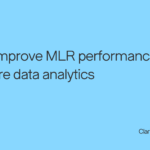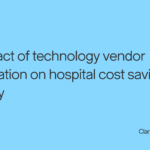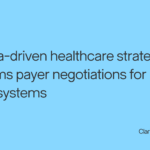This is part two of a two-part series addressing the benefits of technology vendor consolidation for health systems. Part one can be found HERE. In the face of rising healthcare costs and operational challenges, hospitals are increasingly turning to technology vendor consolidation to streamline operations, reduce expenses, and improve patient outcomes. This is not an uncommon phenomenon – a Forrester survey found that 90% of organizations actively seek to unify their IT resources, with 62% having already begun consolidating to just a few core platforms. Instead of managing a patchwork of systems from multiple vendors, hospitals are adopting integrated technology platforms to unify their operations, reduce redundancies, and enhance efficiency. By doing more with less, technology vendor consolidation offers measurable benefits, financial and operational, while supporting hospitals’ commitment to delivering high-quality care. Recent analyses have highlighted the significant savings hospitals can achieve by consolidating their technology vendors. Studies show that hospitals implementing vendor management platforms and integrated systems often report cost reductions of up to 14% within the first few years. These savings are achieved by eliminating overlapping fees, reducing administrative overhead, and centralizing operations. For instance, hospitals transitioning from fragmented systems to a single, comprehensive technology platform have reported millions in annual savings, which can be reinvested into clinical services and infrastructure improvements. One significant advantage of vendor consolidation is its ability to streamline workflows and improve workforce management. By unifying disparate systems, hospitals can enhance their operational agility, reducing the time it takes to onboard staff or reallocate resources. Some hospitals have reported cutting their average hiring timeline by nearly 50%, allowing them to quickly address staffing gaps and ensure uninterrupted patient care. These advantages also encompass enhanced security and compliance. With nearly 775 reported data breaches in 2024 alone, simplifying IT infrastructure is a critical step for hospitals to safeguard sensitive patient information, including PHI and PII, and mitigate cybersecurity risks. Overall, efficiencies from technology vendor consolidation not only save costs but also improve the overall patient-provider experience by maintaining seamless and uninterrupted care delivery. The operational benefits of vendor consolidation extend to clinical processes as well, wherein close to 2/3 of physicians report feeling burned out because of their workload. By integrating technology solutions rather than using isolated point solutions, hospitals can ensure better interoperability and data accessibility across departments. This integration enables clinicians to spend less time navigating administrative hurdles and more time focusing on value-added activities and patient care. Access to real-time data also supports more informed decision-making, fostering collaboration among healthcare teams, which ultimately leads to better patient outcomes. Consolidating technology vendors also addresses the growing demand for scalability and adaptability in healthcare. As patient volumes fluctuate, hospitals with unified systems are better equipped to respond to surges in demand. For example, expanding float pool capacities and optimizing staffing through integrated workforce management tools allows hospitals to deploy resources more effectively, ensuring consistent care delivery even during peak periods. Hospitals exploring vendor consolidation should prioritize solutions that promote interoperability and offer robust support training for staff. Engaging stakeholders across departments—clinicians, IT teams, and administrators—is key to aligning technology solutions with the organization’s needs. Point solutions, while more specific and financially palatable at first, may actually result in higher longer-term costs. A thoughtful, collaborative approach to vendor consolidation ensures a smoother transition, maximizes efficiency gains, and sets the stage for long-term success. By consolidating their use of technology, hospitals can move beyond cost savings to achieve a broader transformation in how care is delivered. Simplified operations and integrated platforms reduce expenses and improve workflows, allowing hospitals to refocus on their core mission: providing exceptional patient care. In the face of inflationary pressures and resource limitations, technology vendor consolidation is proving to be a powerful tool for hospitals to enhance performance, drive value, and meet the needs of the communities they serve. Advantages of technology vendor consolidation for healthcare systems
Technology vendor consolidation and operational benefits
Scaling growth and enhancing adaptability with technology vendor consolidation
Moving beyond cost savings to unlock long–term transformation
Provider: Health System Insights | January 9, 2025
How technology vendor consolidation impacts hospital cost savings and efficiency
Reporting that’s committed to making healthcare insights accessible to all.

The complexity of healthcare data. Clarified.

Made for your most precise decision-making yet. Introducing the Clarify Atlas Platform®, our healthcare analytics platform and the foundation underpinning each of our building blocks. Atlas powers every decision with clarity brought from 20 billion data points and our best-in-class benchmarking technology.

Made for your most precise decision-making yet. Introducing the Clarify Atlas Platform®, our healthcare analytics platform and the foundation underpinning each of our building blocks. Atlas powers every decision with clarity brought from 20 billion data points and our best-in-class benchmarking technology.



